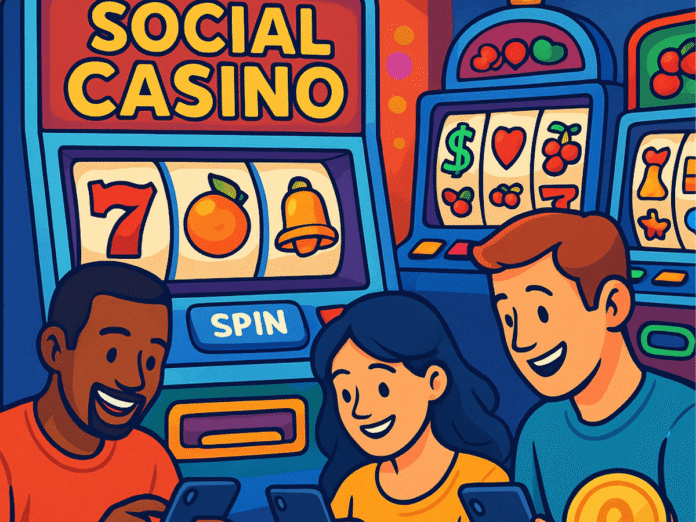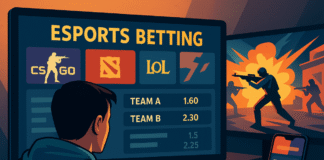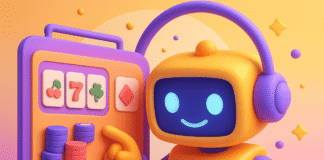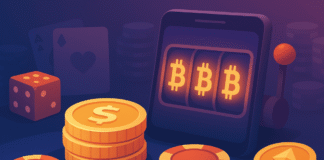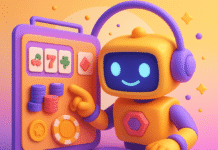Social casino apps have exploded in popularity over the past decade, becoming one of the fastest-growing segments of the mobile gaming industry. These apps mimic traditional casino games—slots, poker, blackjack, bingo, roulette—but with one defining twist: players can’t win real money. Despite that, millions of users log in daily, spend on in-app purchases, join clubs or teams, and stay active for months or even years. So, what’s behind the appeal? Why do players keep spending time (and sometimes money) on games where no cash payout is possible?
This article breaks down the psychology behind social casinos, the role of in-app purchases, how community features drive engagement, and why these apps maintain such massive followings.
The Psychology Behind Social Casinos
Even without real money rewards, social casino games trigger many of the same psychological drivers that make gambling exciting. But because there’s no real-world financial stake, the experience becomes more casual, accessible, and lower risk.
1. The Thrill of Uncertainty
At the core of any casino-style game is the element of chance. Humans are wired to enjoy unpredictability—especially when paired with rapid feedback. Slots spin, poker hands turn, cards flip. The brain reacts to this uncertainty by producing dopamine, the neurochemical linked to pleasure and anticipation. This “reward loop” is powerful and can make these experiences feel exciting even when nothing tangible is at stake.
Social casino apps replicate the feeling of gambling without the stress associated with losing actual money. That makes the thrill more approachable and guilt-free for many users.
2. Progression Systems and Achievement Design
Players don’t just spin or play—they level up.
Game studios borrow heavily from video game design by introducing:
- XP and leveling systems
- Daily quests and missions
- Unlockable machines, tables, or themes
- Achievement badges
- Power-ups and boosts
These mechanics satisfy psychological needs like competence and growth. Players feel they’re progressing in skill or status, even though the underlying games are luck-based. This structure makes gameplay “sticky,” encouraging users to return frequently to keep advancing.
3. Escapism and Relaxation
Many players use social casino apps as a simple, low-effort way to unwind. There’s no need to learn complex controls, follow a storyline, or commit long sessions. The repetitive nature of slot spins or card play can be soothing, much like fidget games.
For a lot of users, social casino apps serve as:
- A mental break
- A quick distraction
- A way to unwind after work
- A background activity while watching TV
The mix of bright visuals, celebratory animations, and pleasing sound effects adds to the overall relaxing experience.
4. Low-Pressure Fun Without Real Losses
Traditional gambling carries financial consequence and emotional weight—win big or lose big. Social casinos remove the pressure entirely. Players can lose their entire virtual balance and simply wait for a refill or claim daily rewards. The stakes are small, and mistakes have no real-world impact.
This makes the games accessible to a much broader audience, including people who would never touch real gambling.
The Role of In-App Purchases
If social casinos don’t offer real money wins, why do players spend money on them?
Interestingly, spending in these apps follows the same motivations seen in free-to-play mobile games across genres. Users aren’t purchasing a chance to win cash; they’re buying an enhanced experience.
1. Buying Virtual Currency and More Playtime
The most common reason people spend is simple: they want to keep playing.
When a player runs out of chips or coins, they can:
- Wait for free hourly or daily bonuses
- Reduce playtime
- Or purchase more currency to continue right away
For many players, the cost is low enough to feel justified. Spending $1.99 or $4.99 for more time in an enjoyable game feels similar to buying a coffee or streaming rental—it’s entertainment value.
2. Access to Premium Features
Many social casinos offer optional upgrades such as:
- Exclusive slot machines or card tables
- Faster leveling
- VIP memberships
- Boosted payouts
- Special events or tournaments
These extras enhance the experience but don’t create any gambling-like advantage, since everything remains virtual. Players who spend often do so to explore more content, personalize their experience, or feel part of an elite tier.
3. The Psychology of Microtransactions
Small, low-cost purchases feel harmless, which is why microtransaction-based games perform so well. The pricing strategy taps into several psychological principles:
- Instant gratification
- “Sunk cost” motivation to keep progressing
- Perceived value of long play sessions versus a low-dollar purchase
Most players spend modestly, but even occasional spending across millions of users creates major revenue.
Community Features: The Heart of Engagement
While chance and progression systems keep users entertained, social interaction is what keeps them coming back long-term.
1. Social Casino Clubs and Teams
Many apps allow players to join clubs, teams, or guilds. These groups often have goals such as:
- Earning points together
- Competing in weekly leaderboards
- Sharing gifts
- Participating in cooperative challenges
Being part of a team creates shared purpose and boosts engagement. Even simple interactions—sending a teammate a free bonus spin—can build a sense of connection.
2. Friend Lists and In-Game Chat
Players enjoy sharing their big “wins” (virtual jackpots) with friends. Real-time chat and friend systems make the game feel like a social hangout rather than a solitary activity.
These interactions satisfy social needs like:
- Belonging
- Recognition
- Friendly competition
And because players often meet regularly in the same clubs or rooms, a community naturally forms.
3. Events, Tournaments, and Seasonal Challenges
Limited-time events are a staple of social casino apps. They create excitement and give players a reason to return frequently.
Examples include:
- Holiday-themed games
- Timed tournaments
- Team-versus-team competitions
- Limited-edition machines or collectibles
These events make the experience feel dynamic and ever-changing, reducing the chances of players losing interest.
Why Social Casinos Attract a Massive User Base
Despite lacking real-money outcomes, social casinos thrive. Here’s why:
1. They’re Accessible to Everyone
No experience needed. No financial commitment. No risk.
Anyone can download an app and start playing within seconds. This accessibility opens the door to demographics far beyond traditional gamblers.
2. They Offer Entertainment Value, Not Gambling Pressure
Players enjoy:
- Flashy designs
- Exciting animations
- Quick rewards
- Engaging soundtracks
All without worrying about financial loss. The games feel like entertainment—much like watching a show, playing a simple mobile puzzle, or trying a virtual theme park.
3. They Provide Social Connection
In an increasingly digital world, games serve as social platforms. Social casino communities are surprisingly loyal and can mimic the social environment of real casinos—minus the pressure.
4. They’re Perfect for Short Bursts of Play
Modern mobile behavior is built around quick sessions—waiting in line, commuting, taking a break at work. Social casinos are ideal for this.
5. They’re Constantly Updated
Game developers frequently introduce new machines, features, events, and challenges. This continuous evolution keeps players curious and excited.
The Bottom Line
Social casino apps succeed not because they offer cash rewards, but because they blend entertainment, psychology, social interaction, and accessible gameplay into a rewarding experience. They deliver the thrill of chance, the satisfaction of progression, and the fun of community—all in a low-risk format.
Players love them for what they are: digital entertainment that fits easily into daily life. As long as these apps continue to innovate and tap into core human motivations, their massive user base is only likely to grow.
Sources:

